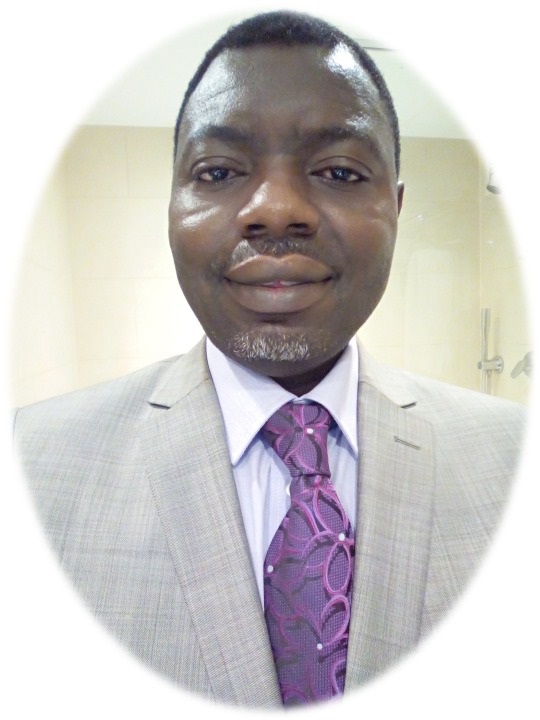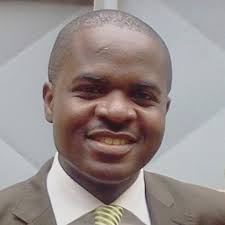La désinvagination intestinale hydrostatique écho-guidée chez l’enfant : l’expérience du centre hospitalier universitaire pédiatrique Charles De Gaulle de Ouagadougou à propos de 63 cas.
DOI:
https://doi.org/10.55715/jaim.v15i1.459Keywords:
Hydrostatic bowel disintussusception, pudding, ultrasound.Abstract
Objective of the study: To take stock of hydrostatic desinvagination activities under ultrasound guidance in the imaging department of the Charles De Gaulle pediatric university hospital center in Ouagadougou from January 2017 to December 2021
Patients and method: This was a descriptive retrospective study over a five-year period from January 1, 2017 to December 31, 2021 of patients who underwent ultrasound-guided hydrostatic intestinal disinvagination at the Charles de Gaulle pediatric university hospital center.
Results: We identified 63 patients. The average age was 22.40 months with extremes of 03 months and 84 months. The sex ratio was 1.42. The majority of patients with acute intussusception (IIA) were admitted during the dry season (79.36% of cases). Abdominal pain was present in all patients. Abdominal ultrasound made it possible to evoke the diagnosis of IIA in all patients, i.e. 100%. The intussusception tube was ileocaecal in 23 patients (36.56%), ileo-colic in 21 patients (33.33%), colo-colic in 17 patients (26.98%), and ileo- ileal in 02 patients (3.17%). Hydrostatic reduction under ultrasound guidance was performed with a success rate of 61.90%.
Conclusion: Non-surgical hydrostatic enema treatment has the advantage of being effective and rarely complicated. Hydrostatic reduction is a non-invasive, effective therapeutic method and has had a relatively high success rate at CHUP-CDG. It could be performed in all health facilities equipped with an ultrasound scanner, adequate disinvagination equipment, by an experienced radiologist.
RESUME
Objectif de l’étude : Faire le bilan des activités de désinvagination hydrostatique sous guidage échographique dans le service d’imagerie du centre hospitalier universitaire pédiatrique Charles De Gaulle de Ouagadougou de janvier 2017 à Décembre 2021
Patients et méthode : Il s’est agi d’une étude rétrospective descriptive sur une période de cinq ans du 1er janvier 2017 au 31 décembre 2021 portant sur des patients ayant bénéficié de la désinvagination intestinale hydrostatique échoguidée au centre hospitalier universitaire pédiatrique Charles de Gaulle.
Résultats : Nous avons recensé 63 patients. L’âge moyen était de 22,40 mois avec des extrêmes de 03 mois et 84 mois. Le sex-ratio était de 1,42. La majorité des patients souffrant d’invagination intestinale aiguë (IIA) était admise en saison sèche (79,36 % des cas). La douleur abdominale était présente chez tous les patients. L’échographie abdominale a permis d’évoquer le diagnostic d’IIA chez tous les patients, soit 100 %. Le boudin d’invagination était de siège iléo-cæcal chez 23 patients (36,56 %), iléo-colique chez 21 patients (33,33 %), colo-colique chez 17 patients (26,98 %), et iléo-iléale chez 02 patients (3,17 %). La réduction hydrostatique sous guidage échographique a été réalisée avec un taux de succès chez 61,90 %.
Conclusion : Le traitement non chirurgical par lavement hydrostatique a pour avantage d’être, efficace et rarement compliqué. La réduction hydrostatique est une méthode thérapeutique non invasive, efficace et a connu un taux de réussite relativement élevé au CHUP-CDG. Elle pourrait être réalisée dans toutes les formations sanitaires équipées d’un échographe, de matériel adéquat de désinvagination, par un radiologue expérimenté.
Downloads
References
2. Cissé R, Wandaogo A, Bandré E, Lougué C, Tapsoba TL, Sano D et al. Désinvagination intestinale par lavement au serum sale isotonique tiédi sous contrôle échographique : Résultats préliminaires à propos de deux cas. J Radiol ; 2008 ; 82 : 1651-4
3. Zoetgandé G. Invaginations intestinales aigue de l’enfant 0 à 15 ans dans la ville de Ouagadougou : aspects épidémiologiques, diagnostiques et thérapeutiques au centre hospitalier universitaire Charles DE GAULLE. Thèse, UJKZ Burkina-Faso, 2018, N°150 ; 138p
4. Harouna Y, Tardivel G, Abdou I, Gamatie Y, Mariama S, Bia. M.Pronostic de l’invagination intestinale aigüe du nourrisson à l’hôpital national de Niamey (Niger). A propos de 11 cas traités chirurgicalement. Bull Soc Pathol Exot. 1997 ; 90(1) : 30–32
5. Riebel TW, Nasin R, Weberw K. US guided hydrostatic reduction of intusuception in children. Radiology, 188 : 513- 516.
6. Rakotoarisoa B, Rabarijaona M, Rabarioelina L, Andrianandrasana A. Invagination intestinale du nourrisson. A propos de 22 cas traités chirurgicalement dans le service de chirurgie pédiatrique au CHU d’Antananarivo. Médecine d’Afrique Noire 2001 ; 48 (8/9) : 358-362.
7. Chen SC, Wang JD, Hsu HY. Epidemiology of childhood intussusception and determinants of recurrence and operation: analysis of national health insurance databetween 1998 and 2007 in Taiwan. Pediatr Neonatol 2010 ; 51 : 285-91.
8. Galinier P, Izard P, Juricie M, Kern D, Domenech B, Baunin C, Puget C, Vaysse P. Invagination intestinale aigüe du nourrisson et de l'enfant EMC, urgence, 24-300-C-10, 2002, 7P
9. Fatima Z. B. réduction hydrique échoguidée de l’invagination intestinale aigüe du nourrisson. [Thèse de médecine]. Université Mohamed V Souissi faculté de médecine de Rabat., Maroc ,2014. 154p
10. Peh WCG, Khong PL, Chan KL et al. Sonographically Guided Hydrostatic Reduction of Childhood Intussusception Using Hartmann's Solution. A.J.R., 1996, 167 : 1237-1241.
11. Franchi S, Martelli H, Paye, Jaouen.A Invagination intestinale aigüe du nourrisson et de l’enfant EMC-pédiatrie 2005 ; 2 ; 45-57
12. Anchalee Kruatrachue , Lawan Wongtapradit , Narong Nithipanya , Warangkana Ratanaprakarn Result of Air enema reduction in 737 case of intussusceptions J Med Assoc Thai, 2011 ; 3(94) :22-26.
13. Navarro O, Dugougeat F, Kornecki A, Shckette B, Douglass J,Demane A et al. The impact of imaging in the management of intussusception owing to pathologic lead points in children. A review of 43 cases. Pediatr Radiol. 2000 ;30 ;594-603
14. Rohrschneider WK, Tröger J. Invagination intestinale aiguë du nourrisson et de l'enfant EAI C. Pédiatrie, 1995; 4 : p6.
15. Bajaj I, Roback MG. Post reduction Management of Intussusception in a Children's Hospital Emergency Department. Pediatrics, 2003 ;1 12(6) : 1302-1307.
16. Crystal P, Hertzanu Y, Farber B, Shabshin N, Barri Y, Sonographically guided hydrostatic reduction of intussusception in children. Journal of Clinical Ultrasound,2020 ; 30(6) : 343-348.
17. Wang GD, Liu SJ,. Enema reduction of intussusception by hydrostatic pressure under ultrasound guidance : a report of 377 cases. J. Pediatric. Surg., 1988, 23(9) : 814-818.
18. Kamdem AF, Vidal C, Pazart L, Leroux F, Savet C, Cornet C et al. Épidémiologie de l’invagination intestinale aigüe chez l’enfant de moins de 1 an. Résultats préliminaires de l’étude Epistudy 2012 ; 10-11 ; 138-143p.
19. Schmit P, Rohr Schneider WK Intestinal intussusceptions survey abou diagnostic and non-surgical therapeutic procedures. Pediatr Radiol 1999 ; 29 :752-61.
20. Traoré SS, Sano D, Hien S et al. Les invaginations intestinales aiguës au Centre Hospitalier National Yalgado Ouédraogo de Ouagadougou : à propos de 51 cas. Annales de l'Université de Ouagadougou, série D ; vol 23, Décembre 2006
Downloads
Published
How to Cite
Issue
Section
License

This work is licensed under a Creative Commons Attribution-NonCommercial-ShareAlike 4.0 International License. Copyright @2017. This is an open-access article distributed under the terms of the Creative Commons Attribution-NonCommercial-ShareAlike 4.0 International License (http://creativecommons.org/licenses/by-nc-sa/4.0/) which permits unrestricted non-commercial used, distribution and reproduction in any medium






